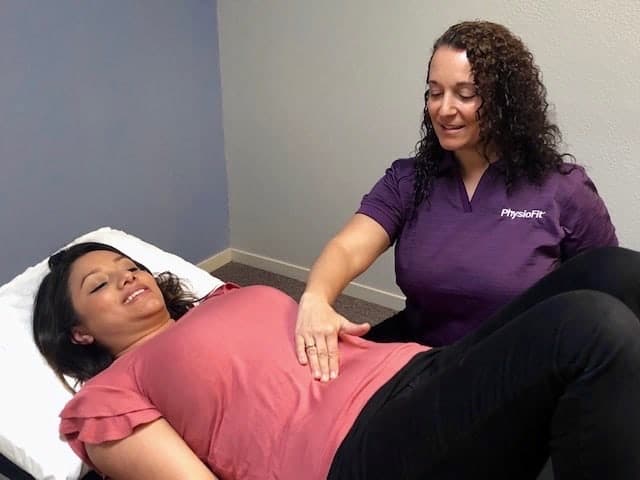
The “mummy tummy,” or “mommy pooch,” may be one of the top concerns postpartum women want to discuss but avoid out of embarrassment.
The reality is, mummy tummy – that extra shelf of abdominal tissue that has a pooch-like appearance – is nothing to be embarrassed about. It’s an extremely common, albeit frustrating, issue for many women, whether they are new moms or have children graduating from high school.
Despite how common it is, a mummy tummy can be a major source of emotional and mental distress, as it can interfere with a woman’s body image and physical intimacy. For such women, seeking help to resolve their mummy tummy is not a matter of vanity, but of self-care.
DIASTASIS RECTI
There’s also another important reason to seek help for a mummy tummy: It’s often a sign of an underlying health condition – diastasis recti.
In the center of the abdomen, running from the pubic bone all the way up to the bottom of the sternum, there is a fibrous structure, the linea alba, which connects the right and left sides of the rectus abdominis muscles, or “six pack.” During pregnancy, the growing fetus – along with many hormonal and biomechanical changes going on in the body – causes the linea alba to stretch out and the ab muscles to separate. This is diastasis recti, in a nutshell.
While diastasis recti can occur in women, men and children, pregnancy is one of the main causes. It used to be thought that things like how much a woman weighed before pregnancy, how much weight she gained during pregnancy and how large her baby was increased her risk for diastasis recti; however, recent research has found no statistically significant link among these factors.
What’s more important is this: Research suggests that 100% of women have at least some degree of ab separation by the third trimester.
There’s no need for discouragement – healing is possible. But diastasis recti doesn’t always go away on its own. It’s been estimated that 40% of new moms continue to struggle with ab separation six months postpartum. And for those who have had multiple pregnancies or have a weak and dysfunctional core – which is common with poor posture and frequent chair sitting – it’s not unusual to experience diastasis recti chronically.
Having a mummy tummy is a major hint that you have diastasis recti. You may also notice symptoms such as low back pain, pubic area pain and signs of pelvic floor dysfunction, such as urinary incontinence and pain during sex. However, these symptoms can also occur in the absence of diastasis recti.
The best way to know for sure if you still have diastasis recti is to consult with a prenatal and postnatal health-care provider, such as a physical therapist with this specialty. A specialized PT can diagnose diastasis recti and help determine how severe the ab separation is – then get you on an individualized plan to treat it.
QUICK SELF-TEST
In addition to scheduling a physical therapy appointment, you can perform a quick self-test for diastasis recti at home. Here’s how:
1. Lie down on your back with your knees bent.
2. Place three fingers in the center of your stomach, just above your belly button.
3. Gently press your fingers down, then exhale and lift your head and shoulders slightly off the ground.
4. As your abs contract, you should feel the muscles close in against your fingers. If you feel a gap around your fingers, this could indicate that the linea alba is stretched and you have diastasis recti. A width wider than two fingers, or approximately 2.5 centimeters, is usually considered diagnostic.
Take note of how your linea alba feels under your fingers, too. Does it feel soft or firm? Do your fingers sink deeply down into the gap? These and other characteristics can help you and your PT monitor the progression of your ab separation.
If you’re ready to heal your mummy tummy, contact PhysioFit to schedule a complimentary Discovery Session to get a plan created especially for you.

 Los Altos, CA
Los Altos, CA
